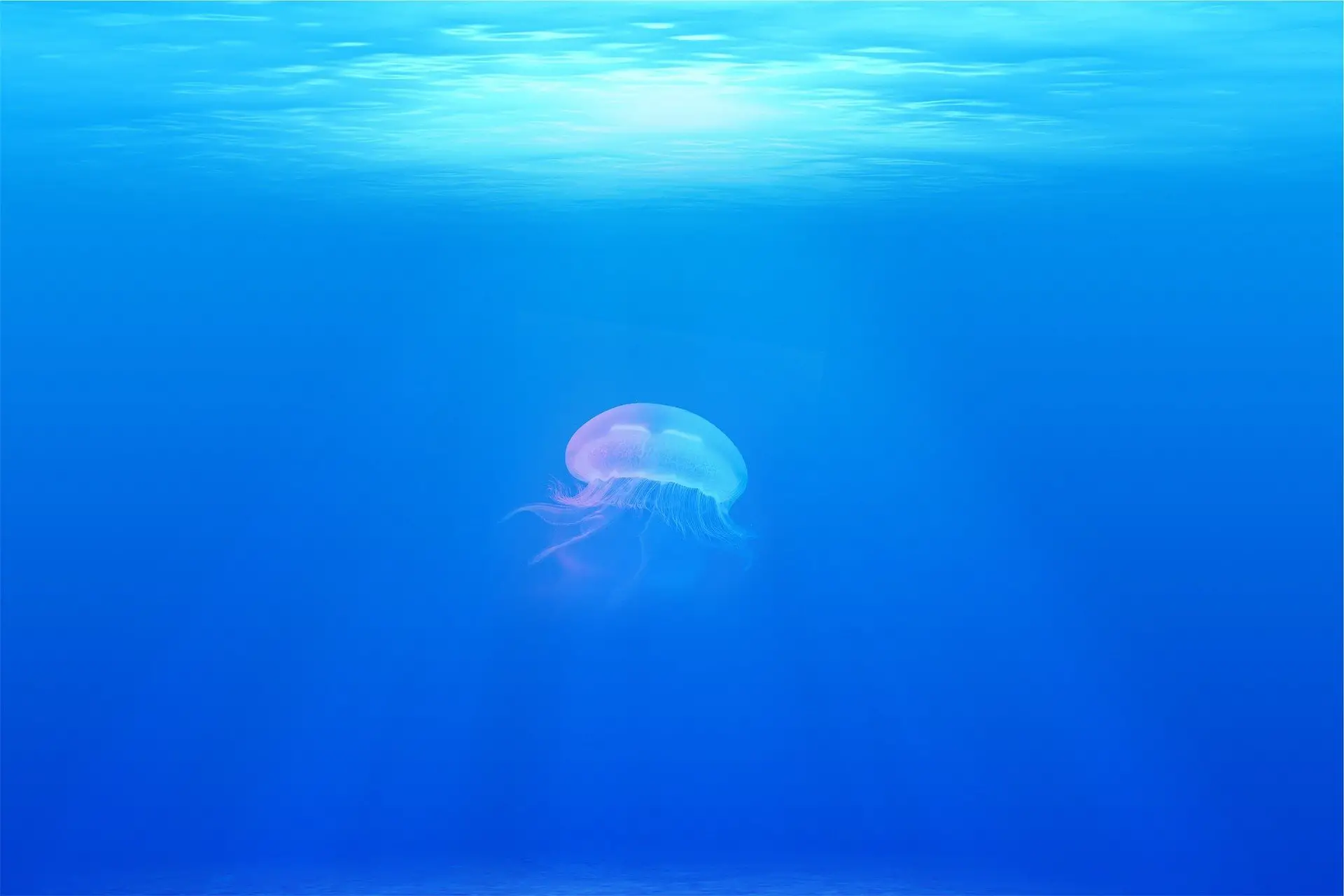Those clear, round-looking creatures you may see swimming by as you enter the coastal water of Georgia, South Carolina, and North Carolina are jellyfish. Depending on the time of year, jellyfish populations can be nonexistent or so thick it seems as though you could walk on them. Unfortunately, jellyfish stings do occur, but fortunately, they can be treated. How do they sting and what is the best method of treatment?
How Does A Jellyfish Sting
Jellyfish look as though they are very simple creatures; however, there is more to them than you would be lead to believe. There are many different types of jellyfish, but they have one thing in common, the stingers are located on the tentacles. It can be hard to believe that a single jellyfish can have thousands of stinger cells.
When a jellyfish makes contact with a human via its tentacles, the stingers open up and allow seawater to enter. Simultaneously venom is released through the stingers and into the victim. The process is quick and challenging to avoid.
What Kind Of Jellyfish Are Found In The Southeast’s Coastal Waters
There are five different types of jellies common to the coastal waters of Georgia, South Carolina, and North Carolina. Learn about each of the jellyfish in Georgia, South Carolina, and North Carolina.
Sea Wasp Jelly
The sea wasp jellyfish has very long hair-like tentacles. The body of the Sea Wasp appears clear when it is in the water. This jellyfish inflicts a powerful sting but is hard to avoid because they are so difficult to see. You will find sea wasp jellyfish Georgia, South Carolina, and North Carolina.
Moon Jellyfish
A moon jellyfish can grow as large as a frisbee but don’t be concerned about its size. Its stings are not as painful as most. The moon jelly is almost entirely transparent except for the white four-leaf clover-looking area at the center. Other characteristics include its flat but round shape.
Lions Mane Jellyfish
One of the most interesting facts about the lion’s mane is that it can glow in the dark. The Lions Mane can be one of the biggest in the ocean; however, in the south, they remain small. When it comes to color, the body is typically yellow or pink with red tentacles. These are usually around in the winter months
Mushroom Jelly
The mushroom jelly is also most commonly found during the winter months. They are also tremendous in size, but the sting is mild. The body is translucent but can have slight hues of brown, pink, or yellow. Mushroom jellies do not have tentacles but rather arms with fingers. Don’t worry about a mushroom jellyfish sting as this type will not sting. Therefore, when you swim with moon jellyfish types of jellyfish in North Carolina, South Carolina, or Georgia you won’t be stung.
Cannonball Jellyfish
Here are some cannonball jellyfish facts. A cannonball jellyfish has a dome-like shape. The outer rim is usually brown, but the main body is milk-colored. Do cannonball jellyfish sting? Yes, they do. Cannonball jellyfish do not have long tentacles but can inflict minor stings.
Can Jellyfish Washed Up On The Beach Be Handled
Jellyfish that have washed up on the beach should be handled with care. Even a dead jellyfish can sting, resulting in pain that could have been avoided. It is best not to hold a jellyfish that has died and washed ashore.
How Do You Know If You Were Stung By A Jellyfish
A jellyfish sting will provide a sensation. The sensation is usually a burning, sharp, or stinging pain that can radiate up an extremity. Understand that, for example, a cannonball jellyfish sting may present a different level of discomfort when compared to other varieties.
How Should A Jellyfish Sting Be Treated
Treating a jellyfish sting is simple and should be done after someone is stung to avoid prolonging the healing process.
Rinse the sting with hot water between 110 degrees and 130 degrees. Avoid overheating the water and causing a burn to the skin
Use a tweezer and carefully remove each of the tentacles that remain attached to the skin. Avoid using your hands because the sting will transfer to your fingers or the person helping.
Soak in a hot bath as soon as possible with water temperatures again between 110 and 130 degrees.
Some may have allergic reactions, so watch for symptoms that include wheezing, hives, dizziness, or shortness of breath. Should this occur, you may want to consider medical attention.
Head To The Beach For Your Coastal Adventure
Remember, the question is often asked how much of the ocean has not been discovered? One quick fact, freshwater jellyfish Georgia, South Carolina, and North Carolina do exist under the right conditions. However, none of the freshwater jellyfish will sting.
You never know when a different variety will show up along the shore. However, the possibility of a jellyfish sting should not prevent you and your pets from venturing off the beach. The symptoms are most often minor, and just because you enter the ocean does not mean you will be stung. Watch where you walk to avoid stepping on that has been washed up. In the event you are stung, follow the steps for treatment.








Leave a Comment
You must be logged in to post a comment.